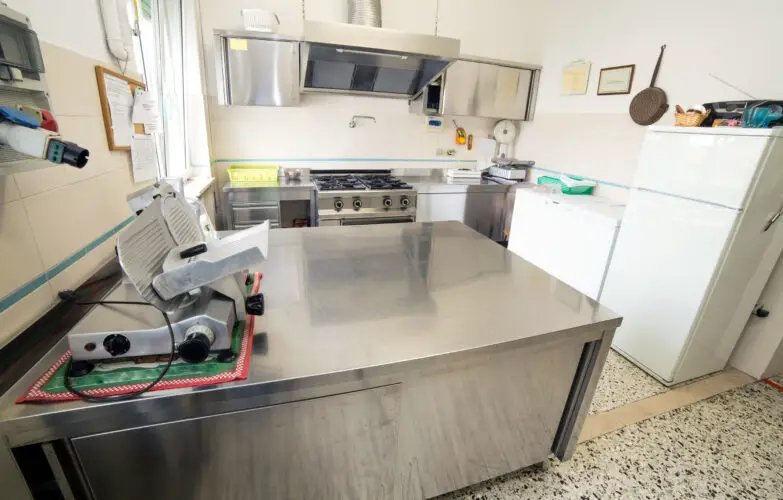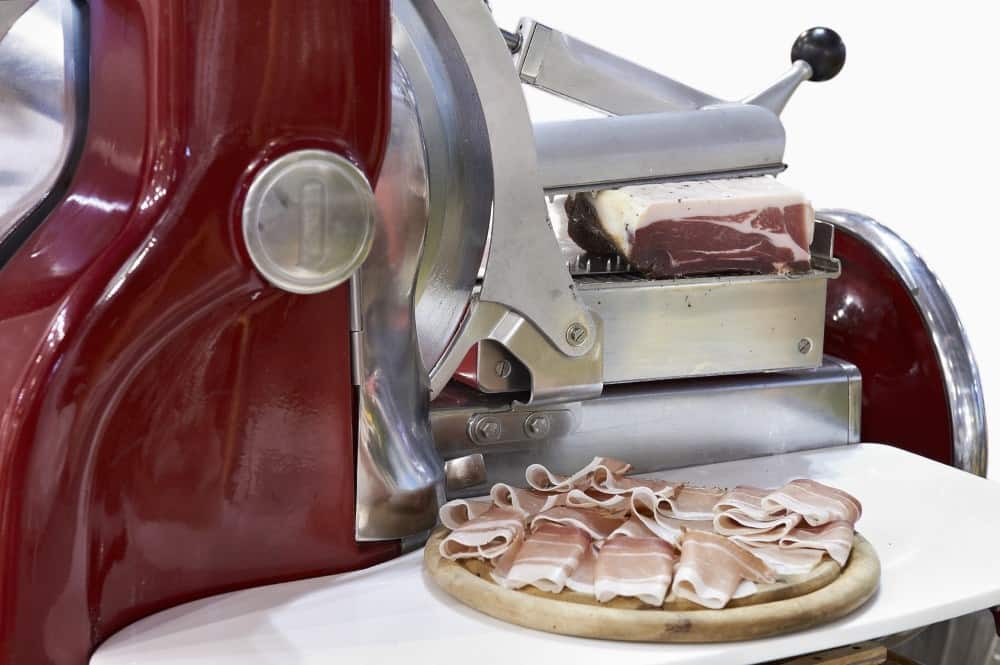This post contains affiliate links. As an Amazon Associate I earn from qualifying purchases
Buying a meat slicer is a great investment for anyone who spends time preparing food. It is a kitchen buddy that will make slicing easier and more efficient. It cannot replace a good knife because a knife can be used in many different ways a meat slicer cannot, but for many tasks that need efficiency and precision of slicing, there’s no way a knife can come close.
When choosing one of these machines, one should keep in mind the characteristics of a good meat slicer. But before diving into this matter, it is best to emphasize that we will discuss here an electric meat slicer not the old fashion kind that don’t use electricity.
Aside from this, one should know that a meat slicer for home use and one for commercial use is generally different in size and the power of the motor. Therefore, the guide here will only focus on how to choose a meat slicer based on key factors that characterize a good meat slicer. So here it is:
Table of Contents
Factors to consider when choosing a good meat slicer
Power and Speed
Some meat slicers you will find use high wattage motors for more efficient and faster slicing. The power output of the motor will determine how quickly and efficiently it can slice meat. Some motors can easily overheat because they don’t have enough power to continue the kind of tasks they are used for.
Power and speed are relative to each other, and this plays a large role when choosing a slicer. For a tip, a good meat slicer should be one that can last at least 2 hours per day without overheating. Thus, look for meat slicers that have a power output of at least 1/3 horse power. This kind of slicer may be used up to 2 or 3 hours per day.
Basic Model Electric Meat Slicers
The lower powered motors, up to 1/3 horsepower (hp) or 250 Watts, are usually found in slicers designed for home use. These kinds of motor are considered good only for simple slicing tasks such as meats and most vegetables, and can only be used for a limited amount of time per day. As a guideline, between one or two hours a day is enough. Time spent slicing cheese should be very limited.
Since it is meat that’s going to be sliced, the motor it requires has to be sufficiently high-powered so that the blade can easily cut through without difficulty. I recommend you do not settle for anything less than 1/3 hp.
Intermediate Level Electric Meat Slicers
The motors on these machines usually have between 1/3 and up to 1/2 hp (370Watts). They also boost a larger blade, which helps with speed.
You could probably operate a small deli using one of these as they can stand longer hours of constant use. Many home chefs also prefer to opt for a meat slicer at this level, as it would be more flexible such as the ability to slice some cheese and has more safety features.
Premium Electric Meat Slicers
Designed to tolerate being operational non-stop. 1/2 hp motors, a slew of safety features and gadgets. Best suited for a supermarket or busy deli/restaurant.
Durability
A good slicer is a durable slicer. Meat slicers that last are only those built with good quality parts and materials.
Durability is one of the most important considerations when looking for a meat slicer. If you have a lot of slicing to get done on a consistent basis heavy duty job and need your machine to run for hours at a time, then you need something that can take the strain and keep going strong.
If you’re looking for something more affordable, then durability might not necessarily be one of your top priorities. In this case, you should look for something that fits your budget but still offers good performance and reliability. For most of us who want to slice our meat for the Sunday roast, to use a slicer for our sandwich meats, and to show a professional presentation to our foods, a basic model will be fine.
However, a basic model with a low-power motor, designed mainly for home use, will not last in a busy kitchen; it’s as simple as that.
The weight of a slicer isn’t always an indicator of the quality but it can be a factor as light-duty slicers often have a few components made from plastic or light-weight metals. The heavy-duty models generally have more powerful motors, as mentioned at least 1/3 hp, and components made with stainless steel. They also usually have more components, a larger blade, larger tray, etc.
For a tip, always look at meat slicers made of stainless steel because it will last and cleaning will not be such a hassle, especially if it has easy to detach features.
Another is the type of gears used. It is always best to look for meat slicers that use metal gears rather than plastic gears but that might not be an option in cheaper models.
Belt-Driven or Gear-Driven Motors
A metal gear-driven machine will be the more durable before parts wear out. However, a belt-driven slicer machine is a lot cheaper to fix in the event of a failure.
Size
When it comes to the size of slicer to get, factors like counter space have to be considered. If there is not enough space on the kitchen counter then one should decide to either make another counter for the meat slicer to accommodate its space or buy a compact meat slicer. Compact units can be carried and stored easily.
There is a considerable difference in the size and weight between the different slicers. A quick check shows a compact machine may have dimensions of approximately (LxWxH) 15 x 12 x 10 inches, weighing 11 pounds, while the heavier duty intermediate slicer came in at 20 x 17 x 15 inches and a weight of 33 pounds.
Therefore, with a compact slicer one can comfortably get it from its storage area when needed and stow it after. With the larger model, not so easy unless you have sufficient counter space to leave it there.
Size of Blade and Food Tray
The blade size is one of the features that can help you to determine the kind of meat slicer that will be good for your needs. The majority of meat slicers in the entry or base level grade will come with blades of about 7 inches (“).
What this means is that you will not be able to cut anything above 7″ tall. Your mid-range slicers will have blades between 7 ½” to around 10″. The premium unit can come with a blade between 10″ and 12”, with some as big as 14″.
Most machines at the entry level also do not give you a choice when it comes to blades. You are usually stuck with the blade that the machine comes with. With the more powerful classes of machines, you often have the option to change blades.
Don’t forget to decide if you want a serrated edged blade or a smooth (fine) edged one, You may of course decide to get both. Here is an article to explain this.
The Food Tray
Your meat slicer comes with a food tray used to collect the food you are slicing. When you compare machines, decide first what size you want. If you will be cutting items that are large, then you may need to look for a slicer which comes with a tray in excess of 14″.
Safety Features
The safety features will determine how the operator can be safe while using the slicer.
- Locking feature for the blade. A meat slicer must have a button that locks the food carriage so that the blade cannot be accessed by children when not in use.
- Each time the slicer is restarted, the power button must be pressed first. This protects you if, for example, there was a power outage while using the machine.
- The blade guard is sufficiently long to cover as much of the blade as possible. It should also not be possible to operate the slicer if the guard is raised.
- It should only be possible to tilt the carriage when the slice thickness regulator is in the zero position. This stops your fingers getting cut in the space you set for thickness of slices.
Conclusion
A good slicer can become your best friend in the kitchen as it can save a lot of time and make you look like a real pro chef. Above all, it is very important to find one that really suits the nature of the tasks you are looking to accomplish with it.
I hope you now have a better understanding of what to look for.

